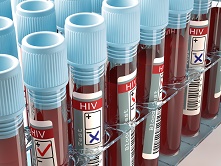Understanding immune system processes offers hope of HIV cure
A potential breakthrough in understanding how the HIV virus gets past immune defences might one day lead to a cure, say EU-funded researchers. Thanks to a European Research Council Advanced Grant, a team led by the University College London (UCL) has identified how the virus infects macrophages – a type of white blood cell – despite the presence of a protective protein. Hope of a cure? Taking this discovery further, researchers have been able to develop a treatment designed to maintain macrophage defences. This is one of the key findings to date of the five-year HIVVINATE project, which was launched in 2014. The project team found that macrophages produce an antiviral protein that typically prevents HIV from replicating. This however can be switched off during normal cellular processes, providing HIV, the virus that ultimately causes AIDS, with an opportunity to invade. But by treating the cell with inhibitors that are sometimes used in cancer treatments, researchers were able to close this window of opportunity. This could be significant say researchers, because once a macrophage is infected, it will continually produce the HIV virus. Cutting off this particular point of infection could therefore be an important step towards safeguarding the entire immune system, and thus finding a cure. HIV remains one of the most serious communicable diseases in Europe. Despite significant advances in the development of effective treatments to delay the onset of AIDS, the virus still leads to thousands of deaths every year and shortened life expectancy. Around 6 300 people a day are infected by HIV. The virus has long been difficult to treat due its ability to effectively hide in dormant cells where the immune system is unable to reach it and destroy it. The fight against HIV also involves high ongoing treatment costs, putting pressure on public health systems. Next steps The HIVVINATE team is now busy defining the sensors and examining the details of the antiviral pathways that are activated in macrophages, using cutting edge RNA interference techniques. Small molecules that might potently inhibit HIV by revealing HIV to innate immune sensors have also been characterised. Understanding the mechanism by which HIV attacks the body has become a key for focus scientists; in another recent EU-funded project, antibodies bound to the virus were analysed to reveal HIV’s vulnerabilities. In collaboration with crystallographers and medicinal chemists, the project will then set about improving the potency and specificity of inhibitor drugs, and use them in further studies of the anti-HIV innate immune response. The project is also interested in examining the effect of triggering innate responses using drug-treated viruses by measuring T cell proliferation. In this way, the team hopes to uncover the molecular details of HIV’s interaction with innate immunity and discover how the virus replicates in primary immune cells without detection. This, say researchers, will contribute significantly to our understanding of the complex relationship between HIV and innate immunity. For more information, please see: CORDIS project page
Countries
United Kingdom



